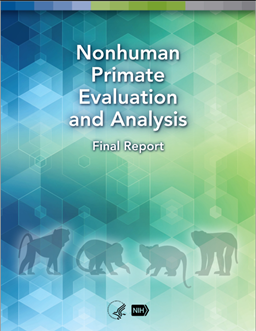Nonhuman Primate Evaluation and Analysis: Final Report
Nonhuman primates (NHPs) play a crucial role as animal models in biomedical research across many research areas. Due to their close physiological similarity to humans, NHP studies provide insights into human disease, cognitive and behavioral functions, aging processes, reproductive medicine, and more. Much of the research performed on NHPs is facilitated by the resources provided by the National Institutes of Health (NIH). A significant proportion of these NHP resources is supported by grants, cooperative agreements, or contracts managed by the Office of Research Infrastructure Programs (ORIP) within the NIH or by other NIH institutes, centers, or offices.
This NHP Evaluation and Analysis, initiated at the request of ORIP and the Office of AIDS Research, provides an overview of the demand and supply of NHPs in the United States. This study covers usage trends from fiscal years 2018 to 2022 and provides a forecast of NHP usage for calendar years 2024 to 2028. The findings from this study will assist NIH in refining management strategies for NIH-supported NHP research resources, which are essential to the pursuit of some of NIH’s high-priority research programs. Additionally, this study will assist the biomedical research community in planning and making decisions that will meet its research needs.
The analysis comprises four components:
- An identification of major available NHP service providers in the United States and their capabilities
- An analysis of historical NHP usage trends by NIH awardees and others from 2018 to 2022
- An assessment of the current NHP landscape and forecast of foreseeable NHP needs
- A survey of NIH-supported extramural and intramural NHP users to characterize current and foreseeable research needs
Past Reports




